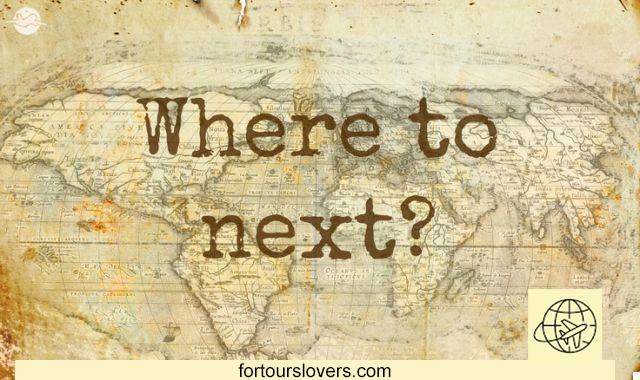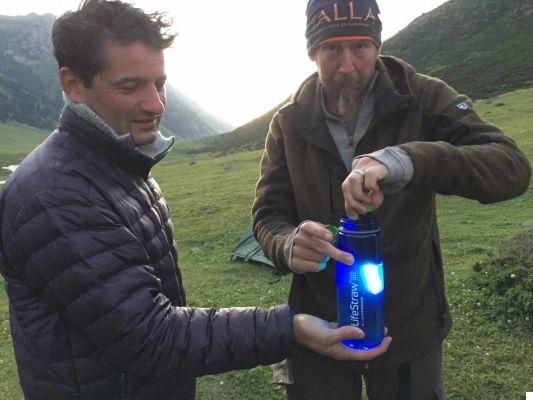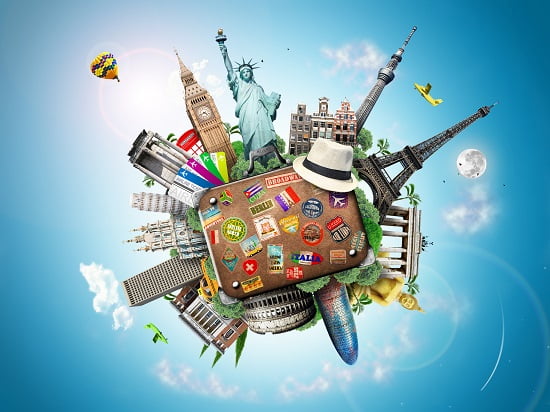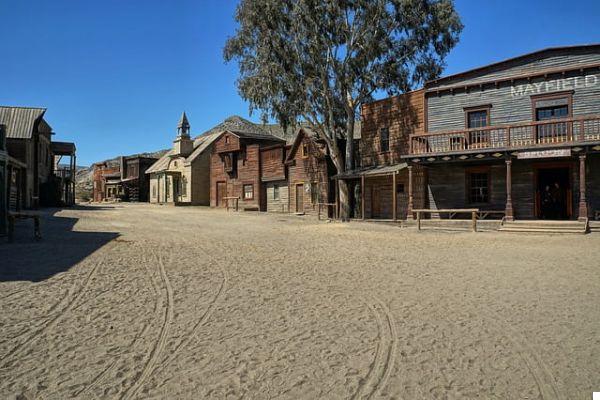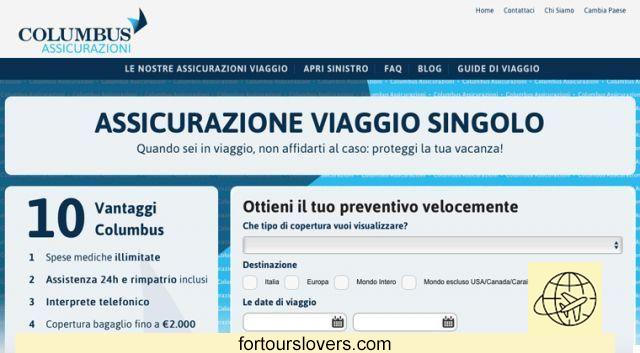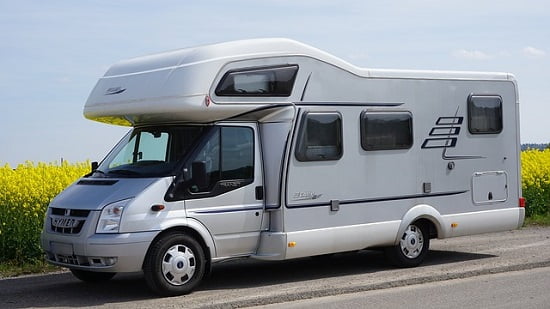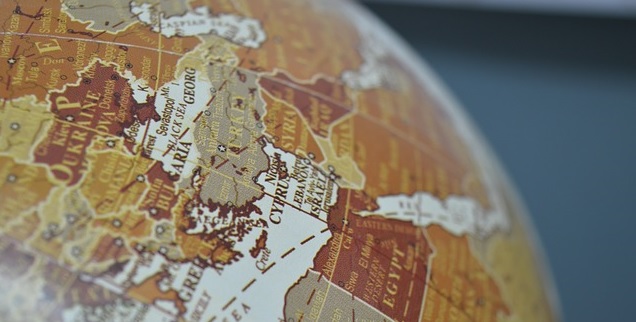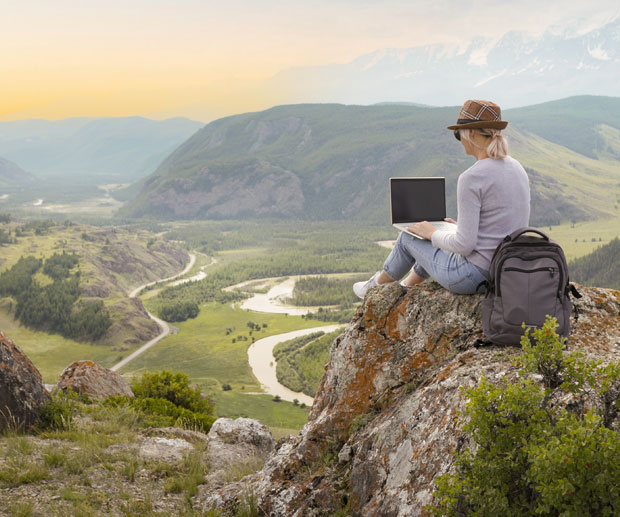
You have finally made the big decision: you have decided for the first time to organize a by your own trip completely by yourself.
You have resisted the comfortable temptation to enter through one of the glass doors of the agencies, the ones with all the flyers attached with the fantastic 5-star resorts and have chosen a little adventure.
Very good, even if you still don't believe it, you will be rewarded in a big way by this choice.
Before you panic about "My-God-what-I-start-but-who-makes-me-do" try to decide what your destination will be: no need to worry too much in fact, unless you have already bought a flight to Somalia, you can rest assured. Otherwise put yourself in God's hands, I just don't know how to help you.
A great starting point for new ideas is definitely this book:
Il Great Travel Book from Lonely Planet is an encyclopedia that every traveler should have in his or her library!
How to organize a do-it-yourself trip
So don't panic why when organizing a DIY trip, wherever you have chosen to go, the "procedure to follow" is fairly standard and does not involve any particular skills other than a little attention.
- Purchase of air tickets
- Which travel guide to choose
- Collection of necessary information
- Choice of the itinerary
- Book hotels, tours and tickets
- Start!
Step 1: purchase of the air ticket
It is not so obvious. In my opinion it is the first thing to do. Only by knowing perfectly when to leave and when to return is it possible to start making a reliable itinerary.
Where can I buy airline tickets? The web is chock full of flight search engines e OTA (Online Travel Agencies) that are used precisely for this, but if you do not trust them you can buy them directly from the airline websites.
Destination chosen therefore, we go to airline ticket search. When purchasing a flight, you have to pay some attention.
I recommend you buy the right ticket, it sounds silly, but in reality there really are those who manage to hit the destination and being on the other side of the world from where he thought he was going. Before pressing the "Buy" button check the following things:
- date and time of arrival and departure of your flight. A flight that arrives at three in the morning can be more uncomfortable than one that arrives at three in the afternoon.
- departure and arrival airport. If there are multiple airports in a city, it is better to land on the most central one than in a one- to two-hour taxi ride from the nearest hotel.
- number of stopovers and length of waits. It is not uncommon, in fact, that especially on intercontinental flights there are even 13 or more hours stopovers and then you could risk staying inside the airport sitting at the Starbucks table until you become mummies.
Once you have checked that the flight is right for you, you can finally press the "Buy" button. When you have pressed it, nothing will have exploded, your pc will still be unharmed, but in return you will have received the famous one via e-mail e-ticket (or electronic ticket for the less IT). You finally have your tickets, so you are ready to go to "phase two"
Step 2: Purchase the travel guide
The market now offers a wide choice of travel guides. Having entered the DIY travelers category, it is more appropriate to look for a guide that, in addition to the descriptions of the places and monuments, also gives practical information for the traveler.
The guide should therefore give general information about the country, but also timetables and departures of public transport, alternative means of getting around, car rental companies, instructions on the necessary documents, a good list of hostels, hotels and restaurants, information on distances and times. of distance and why not, even some hidden gems off the usual tourist itineraries of tour operators.
Among the best known travel guides, the most famous ones stand out Lonely Planet. In fact, there are those who love them, those who hate them, those who love and hate them, those who hate them but nevertheless continue to buy them for an emotional matter (like me for example).
Other great guides are Rough and Routard, but in between my favorites are Bradt and Footprint.
In the end, apart from everyone's preferences, the guides mentioned are more or less equivalent.
The only real thing to pay attention to when buying is that the guide is an updated or recent edition. In fact, the old editions are no longer very reliable!
In addition to the guide, you also buy a map which you will need when you need to plan the itineraries in detail.
Step 3: Read, Learn and Collect Information
In the past it was more difficult, but today with the internet, always find up-to-date information it's really that easy. they are all there at your fingertips. The most important information to retrieve is:
- What documents do you need to enter the country? Do I have to get a visa? is my passport up to date?
- Are vaccinations mandatory?
- Travel insurance, better to do it or to risk it?
- What are the customs and traditions of the country I'm going to visit, how should I behave, how should I dress so as not to offend people's sensibilities or find myself in unpleasant situations?
- How will I withdraw the money, will I be able to use the debit and credit card or better to bring cash?
Phase 4: drafting of the itinerary
If you have already made it this far then you are really well on your way. You have the tickets, you have a clear idea of what you need to travel safely and securely, you know the customs and traditions of the place you are about to visit, you just need a small detail: the itinerario.
When preparing an itinerary you have to enter the order of ideas to make choices, I know from experience.
The fact is that you cannot hope to see everything, unless you have all the time in this world. If like me you have your holidays counted, then willy-nilly and reluctantly you will have to decide what to put and what to cross out from your itinerary and I assure you it will not be an easy choice. So start making a list of the things you would like to see and mark them on a map or a map that you will have somehow obtained.
In general
Try to make the most sense of your itinerary to save time: if for example your destinations will be a little north and a little south, choose to first visit the whole north and then the south, going north-south-north-south will take you a lot of useful time . In short, use a bit of criterion and common sense.
If you travel by public transport my advice is to try to make as many transfers as possible at night. The night train is generally quite safe, covers great distances and is also quite comfortable. The bus is much less so.
Traveling is tiring and tired so after a long journey, consider staying in one place for two or three nights in order to recover and enjoy your holiday. Putting one commute a day is a massacre, as well as physical as well as psychological, in the end you would spend your time on the buses rather than visiting the country you came to, cursing yourself for back pain.
Reality and imagination never get along. Getting around usually takes a lot more time than assumed so KEEP AWAY. If they tell you that it takes two hours to get from one point to another, plan 3 or 4. In reality there are many dead times that should be taken into consideration as far as possible. A lot also depends on the country you are in. If you are in Japan and you travel by shinkansen then you are on horseback, but if you are in India take into account that to travel 200 km by bus you are lucky if it takes you 10 hours.
Shit happens and in this case there is nothing to be done. Unfortunately, sometimes there are setbacks that could ruin your trip. Sometimes they are avoidable with a little attention (I suggest you take a look at the travel tips), other times, hello, you just have to put yourself in the hands of the Lord. Colossal delays due to accidents, incessant rains, landslides and so on and so forth can happen. At this point the only thing you can do is put your heart in peace, sit as comfortable as possible and hope that the problem will be solved quickly: take the opportunity to read a book. Squirting, screaming, crying, and pulling your hair out won't do you any good but to make you go out of your mind. Shit happens, get over it.
During the choice of the itinerary you will change your mind dozens of times. What's funny is that the same beach, the same monument, the same attraction that your guide tells you is not to be missed, 90% of those you will hear will advise you to keep away from it because it is either too touristy, or too crowded or really nothing. special.
I'll give you an example. When I went to China, a friend who had been there told me thatTerracotta Army era a cacata (yes exactly, if I'm not mistaken he used this term). But I like to hurt myself and so I went there anyway: thank goodness I did it because it was one of the things I liked the most of the whole trip.
In short, I'm not telling you not to believe in anything or anyone, on the contrary, collect as many testimonials as possible, especially of people who have been there and whom you know personally, you can also ask on travel blogs in the comments (they are there on purpose :)) but in any case always trust your instincts and take into consideration the fact that sooner or later you will take some package anyway, but that it will become part of that precious baggage called experience.
As an alternative to public transport and if your budget allows you, you can think of renting a car. I strongly advise against the car, however, in some countries (India in primis) where driving is practically impossible, as well as dangerous, for those who are not used to it.
In general, however, I can assure you that if Lonely Planet tells you that a certain beach (I am referring to the famous case of "the Beach", the beach where the film with Di Caprio was shot) is heavenly and unknown to mass tourism stop for a second and think: all those who buy the LP do it because they are looking for unknown places. The problem is that the travelers / tourists who buy the LP are millions of people (I think the LP is the best-selling guide in the world): it is therefore conceivable that everyone wants to go to that unknown beach. So you will find yourself there in the midst of all the other millions of tourists who, like you, have bought the LP to be completely alone on an unknown beach.
Step 5: Make the necessary reservations
When all the previous steps have been taken, the worst moment comes and that is to put your wallet in your hand.
If you have a clear idea of your itinerary and want to run into as few problems as possible, you can decide to book the hotels from home, before leaving.
Book the Hotel
If you have the schedule ready, booking the hotel in advance allows you to calmly choose a di find the best deals: there is no reason to arrive at your destination without already having a place to sleep.
If you are traveling for long periods or you don't want to plan anything, book the first night: many countries in fact require the reservation of the first night also to obtain a visa.
Booking is extremely simple. Thanks to search engines like Booking.com, Hostelworld.com, AirBnb.com booking is really a breeze and choosing early allows you to find many offers.
Some structures also allow you to pay in advance, even if it is something that I do not like very much, in short, I prefer to pay when I am directly on site, of the series “See camel, pay money”.
Once you have made your reservations at the hotels, it is a good habit to call the structures a few days before your arrival to confirm that your room is available.
Book tours, tickets and activities
In addition to hotels, you can also buy tickets for visits, tickets for any train travel, entrances to parks, any day tours, a bit of everything in short.
For the various activities also in this case it is better to book in advance especially if it is very high season. Booking in advance also allows you to search for offers and choose from many tours.
GetYourGuide is my favorite site for this type of booking: on their site you will find endless offers for various activities practically in all parts of the world!
Step 6: go
The fateful day has arrived, the backpack is ready and you are delighted to leave. And you do well. Going on a DIY trip always gives great satisfaction. Before embarking for the airport, however, check that you have with you:
- all personal documents, passport, visa
- photocopies of the travel insurance contract that you have taken out as health coverage
- photocopies of the passport (to be left at the hotel or to be taken around instead of the actual document that will remain safer locked in your hotel room)
- photocopies of all bookings made with the addresses of the hotels (also very useful to be read by any taxi drivers)
- two or more photocopies of the electronic tickets
Well at this point you just have to put your backpack on your shoulder and go. These simple tips are based on the my now more than ten years of experience as a do-it-yourself traveler, but remember that the success of your trip will not depend solely on perfect organization, but above all it will depend on you and your spirit, on how you will face the journey and on your ability to laugh even in case of any small setbacks.
After all, a trip should not be just a sterile list of things to see, but an experience of personal growth and if you have decided to leave, your first big step has already been taken, so I just have to wish you a good trip and a very big good luck!
If you have any questions about how organize a do-it-yourself trip do not hesitate to write to me, the comments are there on purpose, I will be happy to answer you!
Article updated on November 24, 2017




